|
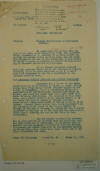 CONFIDENTIAL CONFIDENTIAL
A. W. B. Maj. GS.
March 19, 1927.
Report No. 22
G-2 report, 3,850-a.
NICARAGUA (Political)
Subject: Mexican Interference in
Nicaraguan Affairs.
In compliance with letter from The A.C.
of S., G-2, dated January 28, 1927, file
G-2/2657 P-241, directing me to endeavor
to confirm reports regarding Dr. Sacasa
having received arms, men and money from
Mexico to aid him in the revolution, I
have availed myself of every opportunity
to obtain evidence bearing on Mexico’s
activities in Nicaragua.
Of the eleven documents enclosed
herewith, numbered from 1 to 11 for
purposes of identification, it is
believed that Nos. 4, 5, 6, 7, and 8
have been forwarded to the State
Department by the American Minister
here.
(a) AGREEMENT BETWEEN LIBERALS AND
MEXICAN GOVERNMENT
Enclosure No. 1 is one of the documents
referred to by General C. Rivers D.
(encl. 10) as having been found among
General Sediles’ papers at the battle of
Cosegüina. It is a photostatic plate of
a proclamation by the Nicaraguan
Revolutionary Junta in Mexico, and shows
the bases upon which said junta proposes
alliance with Mexico. The original of
this document, among others referred to
by General Rivers D. is now among the
private papers of General Emiliano
Chamorro and I have been unable to
obtain it as he is in Europe. General
Rivers states that about September 2 on
the occasion of the visit of the U.S.S.
“Tulsa” to Potosí, in the Bay of
Fonseca, he showed all the captured
documents to the Captain of the ship who
had them copied. These copies probably
are now in the State or Navy Department.
The statements contained in enclosure
No. 6, were made by an American upon the
condition that his name would not be
disclosed. As he states that he secured
the six documents referred to from the
Mexican Government and turned them over
to the American Embassy at Mexico City,
they should have found their way to the
State Department ere this.
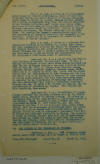 p.
2 p.
2
Par. 1 of encl. 6 refers to “A
presidential order signed by General
José Alvarez, Chief of Staff for
President Calles, directing Minister of
Foreign Relations Aaron Saenz to inform
Dr. Sacasa, through Mexican Ambassador
Cravioto at Guatemala City, that the
Liberal delegates to the Corinto
Conference must insist upon Sacasa being
president of Nicaragua, in order that
engagements with the Mexican Government
might be fulfilled. Failing to impose
Sacasa’s presidency, the Liberal
delegates were to withdraw. The penalty
for Sacasa’s non-compliance would be the
suspension of financial subsidies and
shipments of war supplies. Sacasa was to
be instructed to establish his
government at Puerto Cabezas.”
Par. 2 of encl. 6 refers to a telegram
from Ambassador Cravioto dated October
23, saying that Sacasa had been
communicated with and had agreed to
withdraw from the Corinto Conference and
establish his Government at Puerto
Cabezas, and that a further payment of
$50,000.00 had been made to Sacasa in
return for reassurances that all
engagements with Mexico would be
fulfilled.
Enclosure No. 7 is a letter from the
Nicaraguan Minister in Salvador to
President Diaz. In Par. 5 thereof the
Minister states that: Solon Lacayo
informed him that “he saw in Puerto
Cabezas a document signed in Mexico City
on July 28, 1926 by doctors Juan
Bautista Sacasa, Crisando Sacasa,
Leonardo Argüello, Cordero Reyes, Julian
Irias, and P. F. Zepeda by which they
agreed with President Calles that the
jurisdictions of Cabo Gracias and San
Juan del Norte were to be colonized by
Mexicans or such persons as Calles might
designate and that this concession might
be extended to the departments of
Matagalpa and Jinotega and that
furthermore they signed a concession
favoring a Mexican Company, of which a
Mr. Urrutia is manager, for the
exploitation of petroleum and chicle.
This company has been furnishing them
money.”
Enclosure No. 8 is a translation of a
memorandum furnished the American
Minister here by Dr. Carlos Cuadra
Pasos, Minister of Foreign Affairs. It
refers to statements made by Mr. Adan
Morales Z. Nicaraguan Consul at San
Antonio, Texas, concerning whom I cabled
the War Department on March 11, 1927
(Cable No. 6). Mr. Adan Morales Z. per
Par. 1 of his statement says, among
other things, that the Nicaraguan
Revolutionary Junta was treating in the
name of Sacasa with President Calles and
had pledged itself to form in Nicaragua
a government like that of Mexico and
influence constantly by Mexico, the
hegemony of which in Central American
they will aid in maintaining. That
Mexico in return was going to give them
aid on the Pacific and Atlantic sides
which would be irresistible if the
Government of Nicaragua did not prepare
itself in a very effective manner to
arrest it.
(b) THE SAILING OF THE “TROPICAL” OR
“CONCON”.
Enclosure 3, Par. 1. Raúl Sotomayor
Argena states among other things, that
on August 1, 1926 he left
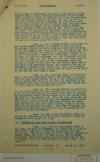 p.
3 p.
3
Mexico
City for Manzanillo in company with
Samuel Sediles, Ruben Narvaez, Abelino
Rodriguez and others on a freight train
guarded by about 30 enlisted men of the
Mexican army, that the soldiers remained
on shore but that he and his companions
sailed on the “Tropical” to Salina Cruz
where they arrived August 16; that in
Salina Cruz they met Salvador
Sobalbarro, Samuel Santos, Julian
Vanegas, Julian Irias, Crisanto Sacasa
and others; they they left on the
“Tropical” for the coast of Nicaragua
for the purpose of commencing a
revolution and after a wireless
apparatus had been installed by an
officer of the Mexican army; that they
left behind in charge of the maritime
guard of the Mexican Government a
quantity of war material; that the
“Tropical” arrived off Corinto August
21, 1926.
Encl. 3, par. 2 Ruben Narvaez states
that he met doctor Julian Irias, Dr.
Crisanto Sacasa and other Nicaraguan
Liberals in Salina Cruz and embarked
with them on the “Tropical”; that they
arrived at Manzanillo the 18th of
August, 1926 for the purpose of coming
to Nicaragua to start a revolution to
change the government, whether it be by
means of arms or diplomacy; that the
“Tropical” arrived at Corinto August 21;
that they did not land there because the
port was in the hands of the government;
that they landed at Potosí 14 men with
arms and machine guns, had an encounter
with government forces and shortly after
got to Cosegüina, occupying “El Retiro”
hill where they already had 45 men and
250 rifles in addition to those in the
hands of the men and four machine guns.
Encl. 4. The American Consul at
Manzanillo states that the “Tropical”
sailed from Manzanillo on Aug. 12th and
that Ruben Narvaez who made the
foregoing statements, sailed from there
on it; that the boatswain of the
“Tropical” got drunk in Manzanillo and
made the remark that “we will soon be
giving Chamorro hell.”
Encl. 5. The American Consul at
Manzanillo reports that “after it (the
Tropical) was reported to have been sold
to the Mexican Government there were no
Customs or Immigration Guards placed
aboard as is the custom where the boat
is a merchant vessel. When she came
alongside the wharf to be loaded with
the arms and ammunition no guards were
aboard, nor were they any aboard during
the three days she was in port after
being loaded, which is the custom with
all merchant vessels.” That “the
‘Tropical’ was loaded by Federal troops
stationed here (Manzanillo) instead of
by the stevedores.”
Encl. 10, Par. 9 General Carlos Rivers
D. states the Liberals under the Sediles
brothers landed at Cosegüina about
August 19, 1926.
(c) SHIPMENT OF ARMS FROM MEXICO TO
NICARAGUA
Encl. 2 is a letter from Julian Irias to
Dr. Baca, captured at Cosegüina,
directing him to give to José Baca a
quantity of arms and ammunition from the
“Tropical”. The letter also refers to
Salvador Sobalbarro. Julian Irias, the
writer of this letter, and Salvador
Sobalbarro sailed from Salina Cruz for
Nicaragua on the “Tropical” about the
16th or 18th of August, 1926. (See encl.
3)
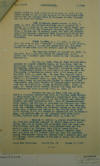 p.
4 p.
4
Julian Irias is also referred
to in Par. 5, encl. 7, by Solon Lacayo
as one of the signers of the agreement
with Calles for the colonization by
Mexicans of Cabo Gracias and San Juan
del Norte.
Raúl Sotomayor Argena states in Par. 1,
encl. 3, that the Mexican Maritime Guard
remained in charge of a quantity of war
material at Salina Cruz; that the
Tropical left for Nicaragua carrying
rifles, ammunition, a cannon and 12
machine guns; and that the Nicaraguan
revolutionists unloaded from the
Tropical about 500 rifles and four
machine guns at Potosí, a small port in
Cosegüina.
Ruben Narvaes, par. 2, encl. 3, states
that the arms on the “Tropical”
consisted of 3,000 rifles, 12 machine
guns, 2 cannon and ammunition and that
they landed 14 men with arms and machine
guns at Potosí.
On Dec. 3, 1926, General José Alvarez
telegraphed to General Arnulfo Gomez, at
Vera Cruz, that in accordance with a
presidential “acuerdo” Captain Francisco
Villanueva, commanding the “Superior”
(formerly known as the “Tamaulipas”)
should be instructed to sail at once for
Nicaraguan or Guatemalan waters with
3,000 boxes of war material (Par. 3,
encl. 6). On same date General Gomez
informed Gen. Alvarez by wire that
Captain Villanueva refused the
assignment (Par. 4, encl. 6). The next
day Alvarez wired Gomez to put Captain
Toledo in command of the “Superior”, and
place Captain Villanueva under arrest
and send him to a military prison in
Mexico City. (Par. 5, encl. 6) Gomez
wired General Alvarez the same day that
Villanueva had been arrested (Par. 6,
encl. 6).
Towards the end of July 1926 don Ramon
Morales received information from his
brother Adan Morales Z. from Mexico that
two formidable expeditions were ready,
steamers and arms, to operate on the
Pacific and Atlantic coasts, and even
indicating the points of disembarkation.
About August 1st Morales Z. informed his
brother that Moncada and Beltran
Sandoval were to operate on the Atlantic
side and (Julian) Irias and Crisanto
Sacasa on the Pacific side; that a
vessel was coming to the Pacific side
with 5,000 rifles, 2,000,000 rounds of
ammunition and 30 machine guns, and
another one to the Atlantic side with
3,000 rifles, machine guns and cannon
(Par. 2, encl. 8).
General C. Rivers D. states that about
Aug. 19, 1926 the Liberals managed to
unload arms and a small force; that it
is known with certainty that the arms
came from Mexico; that the rifles were
Ruso-Mexican and the machine guns were
Vickers; that 275 of these rifles,
60,000 rounds of ammunition and 4
Vickers machine guns were captured at
“El Retiro” hill and that the gasoline
launch “Choluteca” which was loaded with
2 machine guns and 100 rifles, under
command of Colonel J. Baca, was captured
at Potosí;
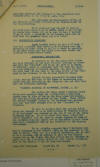 p.
5 p.
5
that nine Mexicans who
belonged to the expedition were captured
(Par. 9, 10, 11, & 12, encl. 10).
The Remington and Westinghouse rifles of
the Liberals are often referred to as
“Ruso-Mexican” by the Conservatives.
It is believed that Colonel J. Baca is
the José Baca referred to by Julian
Irias in his letter to Doctor Baca
(encl. 2), as he says in par. 2 thereof:
“Also if there is room left in the
launch, turn over to José Baca the
gasoline which you have left.”
(d) COMMUNISTIC INFLUENCE
Ruben Narvaez states on page 3 of encl.
3 that his principal aims in coming to
Nicaragua were the spreading of labor
ideas to see if it would be possible to
sow seed which some day might contribute
toward the division of uncultivated
lands.
ADDITIONAL INFORMATION
In addition to the foregoing this office
has been informed by the most reliable
American in Salvador that the “Tropical”
put in to the port of La Union, El
Salvador, where it purchased fuel oil
from the International Railways of
Central America; and that the bill for
said fuel oil was paid to the main
office of the railroad in San Salvador
by the Mexican Minister there.
Admiral Latimer personally informed this
office that he saw some of the boxes of
ammunition captured from the Liberals on
the Atlantic side and that they bore the
following marking: “FABRICA NACIONAL DE
CARTUCHOS, MEXICO, D. F.”
Two rifles and three empty cartridge
cases which were captured from the
revolutionists have been turned over to
this office by the Nicaraguan
Government, and they are being forwarded
in this pouch. These rifles are called
“Concon” rifles by the Conservatives
because they say they were brought here
on the “Tropical” or (Concon).
It will be noticed that the letters
F.N.C. which are thought to be an
abbreviation of “Fabrica Nacional de
Cartuchos” are stamped on the rim of two
of the empty cartridge shells. It is
believed that these rifles and shells
together with the list of serial numbers
of some of the captured arms may enable
G-2 to ascertain whether these arms were
originally sold by the factories to the
Mexican Government.
It is reliably reported that 7 Mexicans
were killed fighting in the Liberal
ranks at San Geronimo on the 14th of
March, 1927, and that General Escamilla,
who is said to be a Mexican, was in
command of part of the Liberal forces
during the fight, but this office has no
evidence to prove that the 7 Mexicans
killed or that General Escamilla were in
the employ of the Mexican Government.
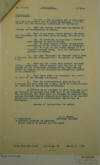 p.
6 p.
6
CONCLUSIONS:
In view of the foregoing and of
statements made by both natives and
Americans in Managua, it is believed
that the following conclusions are
warranted:
1. That the Corinto Conference was
broken up through the machinations of
Mexico.
2. That an agreement exists between the
Mexican Government and the Nicaraguan
Liberals, headed by Dr. Sacasa:
(a) To establish in Nicaragua a
Government similar to that of Mexico.
(b) To grant Mexico certain colonization
concessions on the Atlantic coast of
Nicaragua.
(c) To work for the establishment of a
Central American Union, under the
influence and guidance of Mexico.
3. That the “Tropical” or “Concon”
sailed from a Mexican port for Nicaragua
about the middle of August, 1926.
4. That she was loaded with several
thousand rifles, ammunition, twelve
machine guns and one or two cannon for
the Nicaraguan revolutionists; that she
was loaded by Federal troops stationed
at Manzanillo instead of by stevedores.
5. That these arms were furnished the
revolutionists by the Mexican
Government.
6. That the transportation from Mexico
to Nicaragua for said arms and a small
party of revolutionists was furnished by
the Mexican Government.
7. That there is no evidence to prove
that any regular Mexican troops have
been sent here to participate in the
revolution, but that there is evidence
to indicate that certain Mexican reserve
officers or officers on an inactive
status have accompanied revolutionary
expeditions to Nicaragua.
Sources of information: As stated.
11 enclosures
4 separate packages of exhibits (Above
listed in detail on next page)
A. W. Bloor,
Military Attaché.
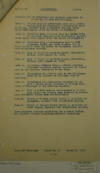 p.
7 p.
7
DETAILED LIST OF ENCLOSURES AND EXHIBITS
PERTAINING TO REPORT No. 22 from M/A
NICARAGUA.
Encl. 1. Printed copy of photostatic
plate of a proclamation from the
Nicaraguan Revolutionary Junta in
Mexico, together with the translation
thereof, found among the other papers
after the battle of Cosegüina.
Encl. 2. Certified copy of letter from
Dr. Julian Irias to Dr. Baca, together
with translation thereof, found among
other papers after the battle of
Cosegüina.
Encl. 3. Certified copy of declaration
made by Raúl Sotomayor Argena and Ruben
Narvaez, two of those captured after the
battle of Cosegüina, together with
translation thereof.
Encl. 4. Copy of report of American
Consul, Manzanillo, Mexico, dated August
13, 1926.
Encl. 5. Copy of report of American
Consul, Manzanillo, Mexico, dated August
24, 1926.
Encl. 6. Statement, obtained from a
reliable American informant regarding
certain documents he turned over to the
American Embassy at Mexico City.
Encl. 7. Translation of a letter sent by
the Nicaraguan Minister in Salvador to
President Diaz of Nicaragua.
Encl. 8. Translation of a memorandum
furnished by Dr. Carl S. Cundra Pasos,
Minister of Foreign Relations of
Nicaragua to the American Legation.
Encl. 9. List of serial numbers and
description of certain rifles and
machine guns captured by Nicaraguan
government forces from revolutionists.
Encl. 10. Report of General Carlos
Rivers D. on battle of Cosegüina,
together with translation thereof.
Encl. 11. Report of General Carlos
Rivers D. on battle of Pearl Lagoon,
together with translation thereof.
Three separate packages containing two
captured rifles.
One separate package containing captured
ammunition.
Encl. 1. Printed copy of
photostatic plate of a proclamation from
the Nicaraguan Revolutionary Junta in
Mexico, together with the translation
thereof, found among the other papers
after the battle of Cosegüina.
|
_small.jpg) encl.
1 encl.
1
JUNTA REVOLUCIONARIA NICARAGÜENSE
SECCION DE MEXICO
MEXICO, D. F.
La Junta Revolucionaria Nicaragüense,
expone ante el ciudadano Presidente de
la República Mexicana, General Plutarco
Elías Calles, el siguiente programa de
acción politíca y militar:
El Comité se propone derribar en
Nicaragua el regimen del traidor
Emiliano Chamorro.
El Comité proclama la soveranía del
pueblo nicaragüense. Por consiguiente
quiere romper, CON EL APOYO
INDISPENSABLE DE MEJICO, los lazos de
servidumbre que tienen a Nicaragua al
capricho de los Estados Unidos.
Por razones obvias, el Comité quiere
poner bajo los viriles y fraternales
auspicios de México, el porvenir de la
Patria, obteniendo primero la libertad
Nicaragua y trabajando después
intensamento por la unión
centroamericana, TODO ESTO BAJO EL
DECIDIDO PATROCINIO DE MEXICO.
Barridos de la scena política do
Centro-América los serviles
incondicionales de los Estados Unidos,
restadas las pretensions de expansión y
predomino de ese país imperialista y
lograda la unión centroamericana, se
ooncetraria UNA VERDADERA Y
PROFUNDA ALIANZA ENTRE MEXICO Y LA NUEVA
NACIONALIDAD DEL ITSMO.
Para conseguir estos elevados fines
políticos y patrióticos, es necesario:
Que México apoye decididamente al
Comité, suministrándole todos los
elementos necesarios para hacer,
sin perdida de tiempo, la
REVOLUCIÓN DE
NICARAGUA.
En resumen:
En el terreno político necesitamos:
QUE LA VOZ DE LA RAZA HABLE EPICAMENTE
POR BOCA DE MEXIO.
Y en el terreno militar:
QUE MEXICO NOS APOYE CON ELEMTOS DE
GUERRA PARA SOSTENER EN EL CAMPO DE
BATALLA LA SIGUIENTE DIVISA: “LIBERTAD O
MUERTE.”
El Presidente del Comité,
El Jefe del Comité Militar,
[signed] S. Sediles
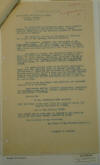 encl.
1 (trans.) encl.
1 (trans.)
TRANSLATION
NICARAGUAN REVOLUTIONARY JUNTA
Mexican Section
Mexico, D. F.
The Nicaraguan revolutionary junta
exposes before citizen President of the
Mexican Republic, General Plutarco Elias
Calles, the following program of
political and military action:
The committee proposes to overthrow in
Nicaragua the regime of the traitor,
Emiliano Chamorro.
The committee proclaims the sovereignty
of the Nicaraguan people. For this
reason it desires to break WITH THE
INDISPENDABLE AID OF MEXICO, the bonds
of servitude which keep Nicaragua bound
to the whims of the United States.
For obvious reasons, the Committee
wishes to place under the virile and
fraternal auspices of Mexico, the future
of their country, obtaining, first the
liberty of Nicaragua and later working
intensively for the Central American
Union, ALL THIS UNDER THE DECIDED
PATRONAGE OF MEXICO.
The unconditional serfs of the United
States being swept from the political
scene of Central America, the
pretensions of expansion and dominion of
this imperialistic country having been
put to a stop, and the Central American
Union having materialized, A REAL AND
PROFOUND ALLIANCE BETWEEN MEXICO AND THE
NEW NATIONALITY OF THE ISTHMUS will be
agreed upon.
In order to gain these high political
and patriotic purposes it is necessary:
That Mexico aid the Committee
materially, furnishing it everything
necessary to promote, without loss of
time, the NICARAGUAN REVOLUTION.
Summing up:
In the political field we need:
THAT THE VOICE OF THE RACE SPEAK IN A
HISTORY MAKING WAY THROUGH THE MOUTH OF
MEXICO.
And in the military field:
THAT MEXICO AID US WITH ARMS TO SUSTAIN
IN THE FIELD OF BATTLE THE FOLLOWING
MOTTO: “LIBERTY OR DEATH”
The President of the Committee,
The Chief of the Military Committee,
(signed) S. Sediles.
|
Encl. 2. Certified copy of
letter from Dr. Julian Irías to Dr.
Baca, together with translation thereof,
found among other papers after the
battle of Cosegüina.
|
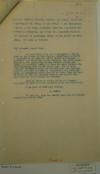 encl.
2 encl.
2
Horacio Argüello Bolaños, Attorney and
Notary Public and Secretary of the
office of the office of the Commanding
General of the army, certifies: that the
copy below inserted is authentic, and
refers to a document found in the
advances by government forces in the
battle of Cosegüina. It reads as
follows:
“My esteemed Doctor Baca:
In conformity with our conversation, try
to give the bearer of this letter, José
Baca, as large a quantity as possible of
rifles which have slings attached and
which are in the bunkers, and rifle
ammunition in the proportion of two
hundred rounds per rifle, if possible,
taking it from the poop through the
small hatchway back of the large one.
Try to have Salvador Sobalbarro help you
to turn over one complete machine gun
with its case of accessories and some
six boxes of ammunition which have to be
taken from the bow. It would be well to
remember that no one should say that
arms are to be taken out tonight.
Also if there is room left in the
launch, turn over to José Baca the
gasoline which you have left.
I am your affectionate friend,
J. Irías.
If you can, hand two machine guns and
sufficient ammunition over to him.”
|
Encl. 3. Certified copy of
declaration made by Raúl Sotomayor
Argena and Rubén Narváez, two of those
captured after the battle of Cosegüina,
together with translation thereof.
|
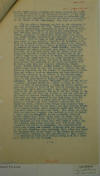 encl.
3 encl.
3
Horacio Argüello B., attorney and notary
public and Secretary of the Office of
the Commander in Chief of the Army,
certifies: That the below inserted copy
is authentic and refers to some
documents taken in the battle of
Cosegüina by the forces of the
Government. They read as follows:
“In the city of Managua, at 4:15 in the
afternoon of the 18th of September of
1926. There being present before the
undersigned, commander in chief of the
republic, a person for the purpose of
making his declaration, and that for
this purpose he is not imprisoned nor
being forced, compelled or threatened,
he was asked his name, age, civil
status, profession and domicile, to
which he answered:
That his name is Raúl
Sotomayor Argena, twenty-four years of
age, married, domiciled in Veracruz,
republic of Mexico and merchant; that on
August 1st, last, he left the capital of
the republic of Mexico for Manzanillo,
in company of Samuel Sediles, Ruben
Narvaez, Andelino Rodriguez and others
of lesser rank whose names he does not
know, on a freight train from the former
place and which was guarded by about
thirty enlisted men of the regular army
of the republic of Mexico, who remained
on land when the declarant with his
other companions took the ship
“Tropical” which took them to Salina
Cruz where they arrived the sixteenth of
the month of Ausut; that in Salina Cruz
they met Salvador Sobalvarro, Samuel
Santos, Julian Vanegas, Julian Irias,
Crisento Sacasa and others whose names
he does not remember, leaving for the
coast of Nicaragua for the purpose of
commencing a revolution and after a
wireless apparatus had been installed,
which was installed by an officer of the
Mexican army, also loading oil and
leaving in charge of the maritime guard
of the government of Mexico a quantity
of war material. That the steamer
“Tropical” left for the latter republic,
carrying rifles the number of which he
does not know, as well as ammunition, a
cannon and twelve machine guns and
arrived in front of the port of Corinto
on August 21st, last, where they lowered
a small boat with three sailors and one
passenger, but as it did not return to
the ship, they did not find out whether
or not the port was in the hands of
persons friendly to those who were
coming to Nicaragua and they returned to
the high seas; that the next day they
lowered a motor boat in the water with a
number of persons and they returned
stating that the enemy was there,
because even though they signaled they
remained hidden, there being no doubt
that they had been fired upon from the
motor boat. That then, on a date which
he does not remember they decided to
land at Potosí, a small port in
Cosegüina, arriving shortly at Puerto
Arturo where they fought some two hours
with a mounted government force; that he
supposes that in all they unloaded at
this place some five hundred rifles and
four machine guns which were the ones
with which they fought in the battle of
Cosegüina, the revolutionists being some
eighty men because, although they had
managed to get more together, many
deserted; that, after the fight the
deponent fell in the hands of the forces
of General Carlos Rivers Delgadillo, who
brought him to this capital as a
prisoner on account of having taking
part as a revolutionist against the
country.
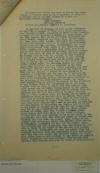 encl.
3 (p. 2) encl.
3 (p. 2)
The above was stated and read to him as
his declaration, leaving it open so as
to continue it later if necessary, and
by his own consent he signed it.
Corrected “Samuel Sediles”.
Raúl Sotomayor
Emiliano Chamorro
Before me, Horacio Argüello B.
Secretary.
In the City of Managua, at 5:30 in the
afternoon of the 18th of August of 1926,
there being present before the
undersigned, commander in chief of the
republic a person for the purpose of
making his declaration, and for this
purpose this person not being imprisoned
nor being forced, compelled nor
threatened, he was asked his name, age,
civil status, profession and domicile,
to which he answered: That he is called
Ruben Narvaez, thirty years of age,
married, cabinetmaker, his residence
being Mexico City, where he has lived
for four years, working as a carpenter;
that about five years ago he left this
republic for Honduras where he remained
for some time, he went to Guatemala and
from there to Mexico; that he left the
capital of that republic on August 1st,
last, about 7 o’clock in the evening, on
a freight train which took him to Salina
Cruz and that he was all by himself;
that in that port he met doctor Julian
Irias, Dr. Crisanto Sacasa and other
Nicaraguan Liberals, that he embarked on
the ship “Tropical” together with the
others mentioned and some more; that
they arrived at Manzanillo the 18th of
Aug. last for the purpose of coming to
this republic to commence a revolution
for the purpose of changing the
government of the republic, whether it
be by means of arms or by diplomacy;
that he carried an appointment of the
delegate of Dr. Juan Bautista Sacasa,
Dr. Pedro José Zepeda, to come as
general in command of the artillery, he
not knowing where the revolution was to
get arms, because until he came on board
they told him the plan which turned out
so badly, taking charge of the pieces
which he was going to have under his
direction; that the armament more or
less was composed of three thousand
rifles, twelve machine guns, two cannon
and an amount of ammunition which he
cannot state in detail; that there were
some 26 revolutionists and a crew of
some twelve, arriving at Corinto on
August 21st where they lowered a boat
with three sailors and a man by the name
of Guerrero for the purpose of
inspecting the port to see if it was in
the hands of enemies and as they did not
return, they went out to sea, returning
the next day about eleven o’clock at
night, when they lowered a launch which,
after having gone very close to the
coast returned, stating that the port
appeared to be in the hands of the
government; that they then left and
landed at Potosí some fourteen men with
arms and machine guns, having an
encounter with government forces and
shortly after getting to Cosegüina,
occupying the hill of “El Retiro” where
they already had some forty-five men,
250 rifles in addition to those in the
hands of the men and four machine guns;
that the forty-five men were the number
when the decisive encounter with the
government forces took place; that they
had more people who deserted before the
fight took place; that he was captured
by the forces of general Rivers
Delgadillo and that together with
Colonel José Vidaurre they treated him
with all kinds of consideration;
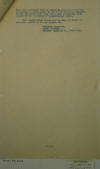 encl
3 (p. 3) encl
3 (p. 3)
that his principal aims in coming to
Nicaragua was the spreading of labor
ideas to see if it would be possible to
sow the seed which some day might
contribute with regard to the division
of incultivated lands.
This declaration being read to him, he
found it correct, agreed to it and
signed it.
Emiliano Chamorro,
Rubén Narváez,
Horacio Argüello B., Secretary.
|
Encl. 4. Copy of
report of American Consul,
Manzanillo, Mexico, dated August 13,
1926.
|
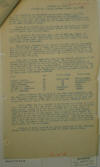 encl.
4 encl.
4
AMERICAN CONSULATE
Manzanillo, Colima, Mexico, August 13,
1926.
Supplementing my Political Report dated
August 11, 1926, file 800 regarding the
same of Mexican boat to Nicaraguan
Generals, I now have the honor to inform
the Department that this office has been
able to verify the statements made in
this report in the main essential facts.
It has been learned that in addition to
the 1,200,000 rounds of ammunition and
2,000 rifles loaded aboard the Tropical,
there were 4 machine guns loaded also.
The Tropical cleared from this port at
3:30 pm, August 12, 1926, consigned to
the Custom Broker for the National Lines
of Mexico in Salina Cruz, where it will
take on more fuel, and will then proceed
to Nicaragua.
The agent in Manzanillo who cleared the
boat was in possession of a letter from
a general Pena, who is reported to be
attached to the Staff of the Secretary
of War, recommending the Nicaraguans to
him and to use all facilities for them
in dispatching the boat. It is known
that the Port Officials here are aware
of the final destination of the
Tropical.
This boat cleared from here with 25 men
aboard, composed of nationalities of
Latin America and Cuba. It is stated
that 6 seaman are sufficient to man the
boat, the rest being members of the
expedition who cleared as passengers. A
list of those believed to be at the head
of the expedition is embodied in this
report. It is not known which of the
Nicaraguans are the supposed generals,
or if they were only pseudo generals.
Name Age Nationality Profession
Manuel Sevilla 34 Nicaraguan Newspaperman
Sandolino Rodriguez 29 do Agriculturist
Ruben Narvaez 34 do Mechanic
Roberto C. Bone 29 do Actor
Marcos A. Gutierrez 32 Hondureno Doctor
M. T. Seelbach 33 German Doctor
Sometime between the loading of the boat
with ammunition and the date of
departure the “bosun” came ashore and
took on a little more tequila than he
could handle and while doing so he made
the remark in Spanish that: “We will
soon be giving Chamorro hell.”
This office has been unable to
completely establish the fact that the
boat was sold for 60,000 pesos, but it
seems from opinion gained from sources
more or less reliable that it was sold.
A young Captain about 26 or 28 years of
age was sent from Mexico City to take
charge of the boat. This office has been
unable to ascertain if he was sent by
the Mexican Government, or if he was
selected by those in charge of the
expedition. This is an important point
but this office has been unable to
secure this information. The Department
will be informed of any further
information this office is able to
secure.
Copies of this dispatch are being
forwarded to the Embassy, Consul General
and Military Attaché for their
information.
|
Encl. 5. Copy of report of
American Consul, Manzanillo, Mexico,
dated August 24, 1926.
|
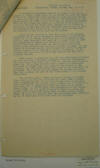 encl.
5 encl.
5
CONFIDENTIAL
AMERICAN CONSULATE
Manzanillo, Colima, Mexico, Aug. 24,
1926
Referring to the dispatches Nos. 61 of
August 11 and 62 of August 13, 1926, I
have the honor to inform the Department
that it has been ascertained from
sources to which credence should be
given that the S.S. Tropical, which left
Manzanillo at 3:30 pm on August 12,
1926, loaded with arms and ammunition
presumably for Nicaragua, and which was
mentioned in dispatch No. 62 as having
cleared for Salina Cruz, Mexico did not
intend to stop there at all, but took
out clearance papers here to make its
clearance here appear to be regular,
although with that the movement of the
vessel has been irregular.
After it was reported to have been sold
to the Mexican Government there was no
Customs or Immigration guards placed
aboard as is the custom where the boat
is a merchant vessel. When she came
alongside the wharf to be loaded with
the arms and ammunition no guards were
aboard, nor were there any aboard during
the three days she was in port after
being loaded which is the custom with
all merchant vessels. As mentioned in
dispatch No. 61, the Tropical was loaded
by Federal troops stationed here instead
of by the stevedores. It is reported
that she paid the clearance charges the
same as any merchant vessel.
This office is convinced that all the
Government officials at this port were
thoroughly acquainted with the
destination and mission of this boat,
but it has no evidence with which to
prove it. It is also believed that a
number of Government officials in Mexico
City were aware of the mission of the
Tropical, and give their morale
assistance to the adventure, if not
more. This office has been unable to
confirm the rumor that the Tropical was
sold to the Nicaraguans by the Mexican
Government.
The El Universal, a daily newspaper
printed in Mexico City, carries an item
in its issue of August 18th, stating
that a suspicious boat passed Salina
Cruz without stopping, whose nationality
was not obtained, neither was it known
if it was armed, but a Custom House boat
was send out to obtain these facts. As
the Tropical left Manzanillo at 4:30 pm
on August 12th, and her speed is about
12 knots per hour, she should have
arrived off Salina Cruz sometime during
August 17th. It could be possible that
the suspicious boat mentioned in the El
Universal could have been the Tropical.
|
Encl. 6. Statement,
obtained from a reliable American
informant regarding certain documents he
turned over to the American Embassy at
Mexico City.
|
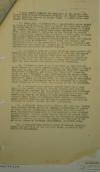 encl.
6 encl.
6
I have myself secured six documents of
the nature mentioned from Mexican
Government offices, and turned them over
to the American Embassy at Mexico City.
I repeat their substance from memory:
1. Under date of October 21, a
presidential order signed by General
José Alvares, Chief of Staff for
President Calles, directing Minister of
Foreign Relations Aaron Saenz to inform
Dr. Sacasa, through Mexican Ambassador
Cravioto at Guatemala City, that the
Liberal delegates at the Corinto
conference must insist upon Sacasa being
President of Nicaragua, in order that
engagements with the Mexican Government
might be fulfilled. Failing to impose
Sacasa’s presidency, the Liberal
delegates were to withdraw. The penalty
for Sacasa’s noncompliance would be the
suspension of financial subsidies and
shipments of war supplies. Sacasa was to
be instructed to establish his
government at Puerto Cabezas.
2. A telegram from Ambassador Cravioto
dated October 23, saying that Sacasa had
been communicated with and had agreed to
withdraw from the Corinto Conference and
establish his government at Puerto
Cabezas, and that a further payment of
$50,000 had been made to Sacasa in
return for reassurances that all
engagements with Mexico would be
fulfilled.
3. A telegram under date of December 3,
from General José Alvarez to General
Arnulfo Gomez, at Vera Cruz, informing
him that in accordance with a
presidential “acuerdo” Captain Francisco
Villanueva, commanding the “Superior”
(formerly known as the “Tamaulipas”, and
between-times by another name which I
cannot recall), should be instructed to
sail at once with 3,000 boxes of war
material, for Nicaraguan or Guatemalan
waters. Captain Villanueva was to be
“advised” by a Sacasa agent aboard as to
his final disposition of the war
shipment.
4. A telegram from General Arnulfo Gomez
under same date as the above, informing
General Alvarez that Captain Villanueva
had refused the assignment, alleging bad
treatment at the hands of Nicaraguan
rebels on a previous mission, and
expressing fear of an encounter with
American warships. General Gomez added
that Captain Hiram Toledo, a suspended
naval reserve officer, was willing to
undertake the trip if restored to active
service and full privileges.
5. A telegram from General Alvarez the
next day, saying that Captain Toledo
should be promised restoration to active
services with all privileges on
condition that his mission were
successfully completed, in the meantime
he was restored provisionally. General
Gomez was to select the ship’s
personnel, with a view to weeding out
the friends of Villanueva. Gomez was
ordered to arrest Villanueva and send
him to the military prison of Santiago
Tlatelelco, at Mexico City.
6. A telegram from General Gomez to
General Albarez, under the same date as
the one next above, reporting the arrest
of Villanueva.
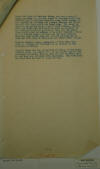 encl.
6 (p. 2) encl.
6 (p. 2)
Brigadier General Evaristo Perez, who
was a general under Carranza and who was
loyal to Carranza until his downfall was
discharged from the army rolls because
of his loyalty to Carranza and because
Obregon and Calles thought that they
could not trust him. The story is that
he was called in by General José
Alvarez, Calles’ Chief of Staff and told
that he would be restored to his rank of
brigadier general at full pay and given
four month’s pay in advance if he would
recruit a force of one hundred other
officers who had been dropped from the
army rolls from the rank of sergeant up
to Captain; take then to Nicaragua and
fight under Sacasa.
General Arnulfo Gomez, commander of Vera
Cruz told this to a friend of informant
as an example of the attitude of Calles.
General Gomez has the reputation of
being pro-American. General Gomez warned
five or six months ago by the president
of Mexico that he must be more careful;
that he had been too friendly with
Americans. The informant was told this
by General Gomez direct.
|
Encl. 7. Translation of a letter
sent by the Nicaraguan Minister in
Salvador to President Díaz of Nicaragua.
|
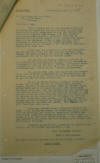 encl.
7 encl.
7
TRANSLATION
San Salvador, Feb. 19, 1927.
His Excellency the President,
Mr. Adolfo Diaz,
Managua.
Your Excellency:
Without having any of your esteemed
notices to answer and regretting the
lack of news, we have only that which is
being circulated here by the Liberals
and the press associated with Mexico.
For this reason I sent you my cypher
message, requesting from you, if
possible, the official version of the
attack upon Chinandega and the testimony
of Mr. Mariano Navarro, Doctor
Franscisco J. Rivas and Mesers. Garcia
and Nato; the latter father of the
director of the “Diario de Occidente”
published in Santa Ana.
Today they are spreading reports that
Matagalpa has already been taken and
that they are marching upon Managua and
that Parajon is to threaten Leon so that
the government will not be able to
mobilize people.
The Minister of Foreign Relations
informed me that Parajon had been
defeated and that he had embarked in
Tempisque and that he was to be watched.
I requested verification two days ago in
order to be able to conduct my
investigations. I have not yet received
confirmation.
The person whose name goes separately
has rendered me very efficient
cooperation in my investigations and
watching, and as he has decided to
settle in this country he gave me the
following information:
He saw in Puerto Cavezas a document
signed in Mexico City on July 28, 1926
by doctors Juan Bautista Sacasa,
Crisando Sacasa, Leonardo Argüello,
Cordero Reyes, Julian Irias and P. F.
Zepeda by which they agreed with
President Calles that the jurisdictions
of Cabo Gracias and San Juan del Norte
were to be colonized by Mexicans or such
persons as Calles might designate and
this concession might be extended to the
departments of Matagalpa and Jinotega
and that furthermore they signed a
concession favoring a Mexican company of
which a Mr. Urrutia is manager, for the
exploitation of petroleum and chicle.
This company has been furnishing them
money.
President Quinones gave a banquet last
night in honor of the diplomatic corps.
We talked for quite a while with the
President and Minister Reguerra of
Colombia and they showed themselves
uneasy on account of the notices which,
I do not know how, circulate here. I
hope that, if you consider it desirable
and when circumstances permit, you will
keep me informed.
Availing myself of the opportunity of
greeting you, wishing you good health
and happiness, I am.
Your respectful servant,
José C. Gasteorozzo.
The following name appears on a separate
slip of paper:
SOLON LACAYO
|
Encl. 8. Translation of a
letter sent by Dr. Carlos Cuadra Pasos,
Nicaraguan Minister in El Salvador, to
President Adolfo Díaz of Nicaragua,
March 1, 1927.
|
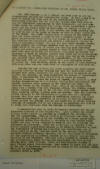 encl.
8 encl.
8
TRANSLATION OF A MEMORANDUM FURNISHED BY
DR. CARLOS CUADRA PASOS.
Mr. Adan Morales Z. is a Liberal and
took part in all the conspiracies
against the Conservative Party. In this
capacity he went to Mexico and took part
in the revolutionary juntas of
Nicaraguan Liberals; but the said Mr.
Morales says that when he saw the
Bolshevist proceedings of that
Government, and that magnitude which the
revolution was taking, which constituted
a great peril for the social order in
Nicaragua, he decided to try to save his
country and wrote to his brother don
Ramon inviting him to come to one of the
ports of Mexico so that he might inform
him of the truth. Don Ramon Morales went
to Mexico in the month of June and there
Morales Z. made to him a complete expose
of the great preparations which Mexico
was making in order to overthrow the
Conservative Government and install a
government similar to that of President
Calles. He told him that Pedro Joaquin
Zepeda, Hernan Robleto and Santiago
Argüello made up the revolutionary junta
which in the same of Sacasa was treating
with President Calles and which had
pledged itself to form in Nicaragua a
government like that of Mexico and
influence constantly by Mexico, the
hegemony of which in Central American
they would aid in maintaining. That
Mexico, in return, was going to give
them aid on the Pacific and Atlantic
sides which would be irresistible, if
the Government of Nicaragua did not
prepare itself in a very effective
manner to arrest it. Both brothers
agreed on the manner of communicating
with each other and don Ramon went to
Washington to talk with me.
Towards the end of July, don Ramon
received the first communication from
his brother telling him that two
formidable expeditions were ready,
steamers and arms which were to operate
on the Pacific and Atlantic and even
indicating the points of disembarkation.
I communicated this information by cable
to General Emiliano Chamorro. About the
first of August, Mr. Morales Z. sent
another communication to his brother
telling him that Moncada and Beltran
Sandoval would operate on the Atlantic
and Irias and Crisanto Sacasa on the
Pacific side. That on the Pacific side
would come a vessel with five thousand
rifles, two million rounds and thirty
machine guns, and on the Atlantic side
another vessel with three thousand
rifles, machine guns and cannon. That
the promises of the Liberals to the
Government of Mexico were of a serious
nature, that they were thinking of
destroying property and lives of
Conservatives and, moreover, of carrying
on violent persecutions against the
church; that he was beginning to notice
serious distrust of himself, but he was
disposed to sacrifice his life if he
could save Nicaragua from the horrors of
Bolshevism.
I communicated this by cable to General
Chamorro but the information appeared to
him exaggerated. After leaving the
United States, about August 11, Morales
Z announced the departure of two
expeditions. Upon my arrival in
Nicaragua and after the repulse of the
expedition of the Pacific, by a means
agreed upon, I received notice from
Morales Z. advising me that Mexico would
insist and that it was disposed to send
an army to establish its influence in
Nicaragua. After the conference at
Corinto, I received another report from
Morales Z. in which he informed me that
the Government of Mexico was preparing
new expeditions, one of which would go
to the Atlantic Coast in the steamer
“Superior” carrying Mexican officers,
animals, and all that might be necessary
for the operations of General Moncada in
his advance towards the interior of the
Republic. Two days later Morales Z.
advised that the revolutionary junta had
had him imprisoned and that he was
running great risk of life. After his
imprisonment Morales Z. went through
great tribulations. They wanted to shoot
him and only by the aid of important
persons did he escape to San Antonio,
Texas where he is now residing.
Managua, March 1, 1927.
|
Encl. 9. List of serial
numbers and description of certain
rifles and machine guns captured by
Nicaraguan government forces from
revolutionists.
|
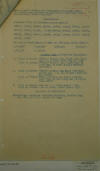 encl.
9 encl.
9
List of serial numbers and
descriptions of certain rifles
and machine guns captured by
government of Nicaragua from
revolutionary forces (Liberals)
Rifles
Remington 1917, the following
serial numbers:
537712, 559408, 591479, 531632,
579679, 517093, 584489, 583310,
576337, 525079, 589592, 591399,
588560, 589340, 585308, 548464,
567165, 574606, 542528, 554968,
541372, 517510, 537708, 574144,
531625
New England Westinghouse 1915-F,
the following serial numbers:
1,167,476 / 1,249,622 /
1,364,832 / 1,202,669 /
1,340,161 / 1,229,800
Machine Guns (captured at
Cosegüina)
1. Reads on barrel: “Vickers
Machine Gun, model 1915, Colts
Mfg. Co. Hartford Conn, USA No.
1075”
Reads on tripod: “Vickers
Machine Gun, Tripod Mark VI
6974, Mfg. by Colts Machine
Hartford Conn USA.”
2. Reads on barrel: “Vickers
Machine Gun Model 1915 Colts
parent F.M. F.M. Co. Hartford
Conn USA No. 10383.”
Reads on tripod: “Vickers
Machine Gun Tripod Mark No.
6061, Mfg. by Colts Mfg. Co,
Hartford Conn. USA.”
3. Reads on barrel: Same as #1,
serial number 11966.
Reads on tripod: Same as above,
serial number 9732
(captured at Bluefields)
Mitrailleuse Automatic Portative
Hotchkiss, Calibre 7/mm, No.
987, and 19,000 rounds for
same.
|
Encl. 10. Report of
General Carlos Rivers Delgadillo on
battle of Cosegüina, together with
translation thereof.
|
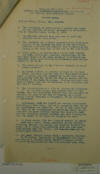 encl.
10 encl.
10
MILITARY OPERATIONS BETWEEN THE
CONTENDING CONSERVATIVE (GOVERNMENT) AND
LIBERAL (REVOLUTIONARY) FORCES.
Western front.
To Major Bloor, U.S.A., Mil. Attaché.
1. The revolution or first uprising
against the regime of Gen. Emiliano
Chamerro, commenced in Bluefields, East
or Atlantic Coast, on May 3, 1926.
2. The Liberals did not have any arms to
start any movement on the West Coast.
3. The proximity and railroad
communications to Managua, capital of
the country and base of the Government,
probably prevented the Liberals from
starting an uprising at the same time as
the one on the East coast.
4. Large numbers of Conservative troops
left rapidly for Leon, Chinandega,
Corinto, Chichigalpa, La Pas and other
places of the west, prepared to confront
any situation which might develop in
connection with the uprising in the
East.
5. The first attempt in the East was
subdued and apparently settled.
6. On August 4 there was another attempt
on the East Coast, and this time the
Liberals endeavored various times to
unload arms and ammunition on the West
Coast and possibly with the intent and
plan to operate for the overthrow of the
Chamorro regime. Various attempts were
made to unload arms and war material in
El Tamarindo and the Port of Corinto.
7. The Conservatives were able to
prevent the unloading of arms at both
places, but shortly after it was learned
that the ship which carried this war
material had unloaded the arms in the
Bay of Fonseca, at a point called
Portesi, District of Cosegüina, in the
department of Chinandega.
8. Chinandega, Leon and Esteli are
western departments bordering on each
other, and it is estimated that 90% of
its inhabitants are Liberals. It may be
said that from the time of the
independence of Nicaragua there has
always been an acute rivalry between the
so-called Leon and the so-called Grenada
section; and this rivalry has been the
cause of all kinds of disputes and wars.
9. On about August 19th the Liberals
managed to unload arms and a small
force, commanded by the Sediles
brothers, Octavio and Samuel, and
generals Vanegas and Bone. It is known
with certainty that the arms came from
Mexico; that the rifles are Ruso-Mexican
and the machine guns Vickers.
10. The small Liberal forces took a
defensive position in El Retiro,
(mountains of Cosegüina); and they
probably were awaiting there further
landings of war material to arm
civilians who were coming to join them.
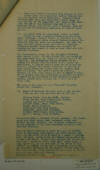 encl.
10 (p. 2) encl.
10 (p. 2)
11. Government forces were sent from
Managua to this sector under the command
of General Roberto Hurtado and General
Rivers Delgadillo. Generals Perez and
Benavento were operating with a small
force of some 200 men in “El Tamarindo”
and General Adan Velez with 150 men of
the National Army and 60 of the National
Guard, were in the port of Corinto, both
for the purpose of preventing unloading
of arms at these places.
12. On August 30th the government forces
received orders to make a general attack
upon the Cosegüina position. General
Rivers D. attacked from the left and
northeast, while General Rurtado
attacked the Liberals from the right and
northwest. The Liberals were defeated
after almost six hours of fighting.
Forty-two wounded Conservatives were
brought to Managua and the number of
dead on both sides are calculated at
ninety.
The Conservative forces in the Cosegüina
district were around 1,100. In this
battle 380 men fought on the government
side and about 200 on the side of the
Liberals. The government troops captured
at El Retiro 275 rifles (Ruso-Mexican),
60,000 rounds of ammunition, 4 Vickers
machine guns and at Potosí the gasoline
launch “Cholutesa” commanded by Colonel
J. Vaca (Baca) which was loaded with two
machine guns and 100 rifles. The Liberal
generals Sediles, Vanegas and Bone were
killed in the Cosegüina battle. The
disbanded Liberals, according to notices
received, withdrew in the direction of
the Honduras frontier, leaving behind
dead, wounded and a large part of their
arms.
The name of the ship was the “Tropical”
formerly called the “Concon”.
13. Names of Mexicans who were part of
the expedition and who were captured are
as follows:
Alfonso Najor, from Mazatlán, Sinaloa.
Julio Cuevas, from Tehuantepec, Oaxaca.
A young man called Mijangos.
Alberto Rubic, yaqui from Sonora.
Miguel Angel Esquerro.
Lieutenant Peña from Mexico.
Guillermo Amajo from Veracruz.
Mariano Félix Ochoa, from Mexico.
Luis C. Horney, from Veracruz.
.jpg)
Lieutenant Peña, a Mexican officer
escaped. His photograph was found among
other documents which were carried by
Gen. Sediles. The captured documents are
in the archives of the then commander in
chief, Gen. Emiliano Chamorro.
General Rivers Delgadillo saved the life
of Alfonso Najor of Mazatlan, Luis
Horney and Julio Cuevas, who were
already lined up to be shot by a group
of government soldiers. Later Najor and
Horney accompanied him to the East
Coast. Najor later escaped and joined
the Liberals. Horney is still with him.
About Sept. 2, Gen. Rivers D., on the
occasion of the visit of the “Tulsa” to
Potosí, in the Bay of Fonseca, showed
all the captured documents to the
Captain of the ship, who had them
copied. This warship had been sent to
Potosí to look after sick and wounded.
Managua, March 8, 1927.
(signed) C. Rivers D.
|
Encl. 11. Report of
General Carlos Rivers Delgadillo on
battle of Pearl Lagoon, together with
translation thereof, March 8, 1927.
|
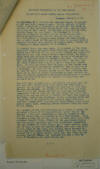 MILITARY OPERATIONS ON THE EAST FRONT. MILITARY OPERATIONS ON THE EAST FRONT.
Report of General Carlos Rivers
Delgadillo.
Managua, March 8, 1927.
On September 22 I left for the Atlantic
Coast, in command of 400 men with 6
machine guns. In the village of Santo
Tomas, Department of Chontales, we
detained the march on account of the
armistice during these days, staying
about one month in this place. On
November 8 we left for Rama, staying
there for some days. On November 22 I
took command, as General in Chief of the
Pearl Lagoon Zone, having my
headquarters in the town by the same
name. I was accompanied by generals Juan
Moraga and Luis Zelaya, and we had a
total of 965 men with whom we covered
various sections of this zone; having 12
machine guns, 9 Lewis and 3 Vickers of
those captured in Cosegüina.
I remained there for some days. On
December 19 the revolutionary forces
commenced their offensive, making a
strong attack upon the Bar of the port
with infantry and artillery bombarding
the port from a Mexican boat called “La
Carmelita” with two caliber 45 mm guns.
We had a 44 mm caliber mountain gun with
which we defended the bar. The fire of
this gun silenced that of the
“Carmelita”. On this day the fight
lasted from 6 am to 3 pm and they were
thrown back. On this day there were on
board of the launch some 200 men
commanded by General Escamilla (who is
said to be a Mexican). We captured one
of the enemy’s soldiers and he told me
that a general attack on all of our
positions was planned; in view of which
I requested my next superior to send
sufficient ammunition for necessary
defense, a request which was not taken
care of, because no importance was
attached to it.
The next day, December 20, a new attack
was made upon the bar and daily fights
took place until the 23rd when a general
attack upon all flanks was made and we
were completely surrounded. We fought
all of the 23rd and 24th. When I noted
the latter day that we only had
sufficient ammunition left to hold out
one day longer and there not being hope
for any relief, I decided to leave the
night of the 24th, evading the vigilance
of the attacking force and taking all of
my equipment and machine guns; marching
through a swamp until arriving at False
Bluff, where I remained three days,
awaiting orders without being molested
by the enemy.
On December 23 the revolutionists in a
force of about 300 attacked a force of
40 men guarding a place called “La
Bodega”. They were commanded by General
Escamilla and Colonel Plata (who is
believed to be a Guatemalan). They
captured nearly all of the guard. At
this same place they captured General
Eliseo Méndez of the government forces
who was on his way from Rama with
sufficient ammunition for the defense of
Pearl Lagoon and 2 Lewis machine guns.
All of this as well as General Mendez
fell into the hands of the enemy on the
23rd, the general being wounded in both
arms (the right broken by a rifle shot
and the left wounded by a revolver
shot). Next day, the 24th, in the
morning General Méndez was tortured
against a tree by General Escamilla and
shot afterwards.
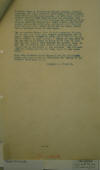 encl.
11 (p. 2) encl.
11 (p. 2)
Colonel Juan M. Navarro and Miguel
Estrada, Antonio Paniagua and other
officers whose names I do not recall
were killed in the same manner. At this
same place an officer called Ramon
Enrique Lazo was captured, and once a
prisoner one of the Mexicans who
accompanied Escamilla shot him through
his right temple, the bullet coming out
at the left side, and having left him
for dead, he was later picked up by the
Red Cross alive, but he remained blind
in both eyes.
The government forces lost in this
encounter 60 men, 48 wounded, 137 lost
from advance detachments and 20 sick.
About 700 camped in False Bluff and
having received orders to that effect, I
turned my arms over to the marines at El
Bluff in order to be able to pass with
my men without arms through the neutral
zone, so that the 12 machine guns before
mentioned and all rifles are in the
hands of the marines. The disarmed army
was reconcentrated in Rama, where it was
again armed.
When they attacked Pearl Lagoon I had an
intestinal fever, and when I got to
Bluefields the doctor of the “Denver”
took care of me.
(signed) C. Rivers D.
|
United States National Archives, College Park
MD, Record Group 165, Entry 77, Box 2653.
Transcribed by Nicholas J. Quadrini.
|

